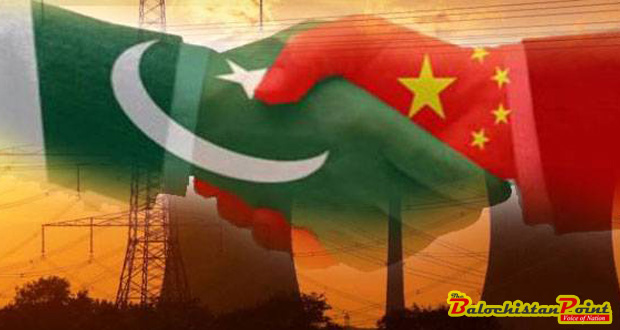By: Asal Khan Kakar
Inter-regional connectivity of south Asia and central Asia through CPEC:
There is a new trend of regionalism and regionalization due to the indigenous demands and realities of the sister regions i.e. south Asia and central Asia. This phenomenon of regional connectivity in Asia is needed and is a way forward to central and south Asian states where they could play more on cooperation and dictum of mutual dependence by strengthening mobility. The regions of south Asia and central Asia has its own strategic importance in the spectrum of geopolitics, Geo-economics. In this case both the regions are obviously dependent on each other. CPEC will provide a cost effective transit trade route to the central Asian landlocked countries while the central Asian countries have a huge amount of hydro carbons assets which will help south Asian countries to overcome through the demands of energy. Apart from hydro carbons the hydel power generation of Tajikistan and Kirghizstan is also a mean for the regional connectivity of the two regions.
Historically both the regions were once on the cross roads of the silk route, a conduct which was done for the exchange of ideas, culture and commodities from east to west or from west to east. But this conduct was the victim of the great game of Russia and Britain because the south Asia was once crown of jewel for Britain while the central Asian countries were under the control of the great Russia. But the post-soviet central Asia is once again ready to revive its history where their main focus is on economic linkages, strengthen of cultural ties, building of mobility, consolidation of political harmony, and culmination of diplomatic bond. Apart from this both the regions have to quell the rise of terrorism, militancy and religious extremism for sustainable peace and development in the heart of Asia. The new regional connectivity is a win-win situation for both the regions.
The corridor will expand the number of trade routes between China and other regional counties. Gwadar- Xingjian route can serve as an alternative to the Malacca straits for the transportation of energy, which will be time and cost effective and will enable China to increase its energy security by reducing reliance on the Malacca route, as it is already a possible flashpoint of blockade by the US or Indian navy. Further to this, once CPEC will be operational, China will find new markets for its products in Central Asia, Africa, and Middle East; Xinjiang will get access to the warm waters of Arabian Sea; CPEC will initiate more economic activities in this less developed North-western province and help China in the execution of its Western Development Strategy (WDS). Moreover, in the view of Obama‘s 2012 regional strategy, ‗Pivot to East Asia‘, the corridor signifies an attempt by China to prevent the US from expanding its influence in Southeast Asia, and thus bears enormous implications for Sino-US strategic rivalry in Southeast Asia. For a state like Pakistan, which faces severe economic and political challenges, the CPEC will provide a big opportunity to stabilize its economy while refining ties with its neighbors and making Gwadar a trade and economic hub of the region. Furthermore, CPEC that includes the construction of roads, railway tracks, energy pipeline routes, and Gwadar‘s international airport, promises Pakistan a novel asset in the form of infrastructure. Additional economic benefits of CPEC will enhance security cooperation between China and Pakistan and overcome problems like terrorism, extremism, and separatism. Through CPEC, Pakistan and China would also get an opportunity to augment their naval cooperation in the form of joint exercises, trainings, and counter piracy measures at high seas. This would contribute for the balance of power in the whole region.
IMPACTS OF CPEC ON REGIONAL AND EXTRA REGIONAL ACTORS:
In coming years, CPEC will radically change the overall geo-political and strategic landscape of Asia and has enormous potential to reshape the economic outlook of the regional states. It is expected that millions of people of the region will benefit from this corridor as the project has the capacity to boost economic activities, increase trade linkages, enhance technical cooperation, generate new financial opportunities, and amplify socio-cultural connectivity among people in the region. However, putting the idea of CPEC into reality is still facing some challenges as some regional and extra regional actors may see the project with critical eyes and as a threat to their interests, which can hinder the peaceful completion of the project.
AFGHANISTAN:
For a lock head country like Afghanistan CPEC is very beneficial. With the extension of the project to Afghanistan will help Afghanistan to boost his economy and will help in developing the state. The Kabul can be easily connected with the CPEC project through a motor way of 265km from Peshawar to Kabul. This connection will help Afghanistan to integrate with other countries of the region and will help him to start his economic activities through Indian Ocean. Also with the increasing links of route in the country will help to encourage more trade between the two countries.
CENTRAL ASIAN STATES:
Due to the vital strategic location of central Asian countries which are rich in oil and gas such as Tajikistan, Uzbekistan, Turkmenistan, Kazakhstan, all the states of the region will connect with Pakistan and china. For the central Asian country CPEC is also important, as they have no access to seas so they will find a route to the oceans and will increase its export through Gwadar port. If the railway track is made then the central Asian countries will have a direct link with the CPEC and they will reach Gwadar very easily.
IRAN:
Iran was first against the CPEC project and made its Chabahar port with the help of India. But in 2015 they say that we will connect the Chabahar port with CPEC. It is of great importance for Iran as it will have the shortest route to connect itself with the china that will increase its trade with the china and also with the central Asian countries.
These all facts show that CPEC is very important for Pakistan as well as other regional countries and it increases the importance of the geo-strategic importance of Pakistan.
United Arab Emirates (UAE):
Another country seems unhappy with the idea of CPEC is UAE. It is a fact that ports play main role in economy of UAE and once Gwadar port becomes fully operational it will directly affect Dubai port, which can lose some 70% of its business. Moreover, recently the relations between Pakistan and the UAE has been affected by the former‘s refusal to send forces to fight along UAE and Saudi Arabia troops with Houthi rebels in Yemen. These factors prompted UAE to search for new strategic partners to work against Pakistan and India seems to be an apparent option. However, UAE should understand the ground realities which indicate that the drawback of CPEC and Gwadar for UAE are not for longer period. In future, if UAE make investment in real estate and construction in Gwadar, it can generate huge profit for UAE. But lining up with India to halt the construction of CPEC, will sever UAE‘s relations with Pakistan.
India:
The CPEC which is still a bilateral initiative between Pakistan and China has increased Indian mania, creating some sovereignty concerns for India as the corridor can counter hegemonic designs of India in the Indian Ocean, Arabian Sea and the Persian Gulf. In addition, CPEC will have a direct land route access to the CARs with Afghanistan and Iran which India does not have. Thus India, the preeminent power of South Asia, is visibly upset over the plan of CPEC and has explicitly voiced its opposition. Even Indian PM Modi during his visit to China tried to propose the Chinese President to drop the plan of the corridor as India found the very idea unacceptable; however, China is determined to move ahead with the project.
UNITED STATES:
The most influential world power, the U.S. has not opposed CPEC so far instead U.S. State Department has made supportive statements regarding the project and wished that CPEC will include other neighbors like Afghanistan as well. With the changing geo-politics, it seems that the U.S. influence may recede notably from this region at least in the short run as it is apparently providing the opportunity to China to act as a balancer in the region mainly due to the worsening of its relations with Russia. By encouraging Sino-Pak economic ties, the U.S. can use their increasing economic reliance to address some key concerns in the region with the help of China, such as to counter of terrorism and extremism.
The construction of CPEC may face some objection from the U.S. as the Gwadar seaport port has important Geo strategic and political implications for U.S. interests in the region which may be used as a Chinese naval base. The U.S. had reportedly made attempts in vain to persuade Pakistan against handing over the management of Gwadar port to China. CPEC may also challenge the U.S. interests in resource-rich region of the Middle East, the Persian Gulf and in Central Asian states. Eventually, the U.S. may be working on strategies to cope with the expansion of China in the region, e.g. it has also given its own version of the New Silk Road Project seeking to enlarge its control in rapidly growing Central and East Asian regions. However, if it could settle down with the idea of China to play a primary role in Asia, the U.S. can manage to safeguard some of its foreign policy interests, including its policy to eliminate terrorism and its human rights efforts.(To be continued )
Published in The Balochistan Point on April 27, 2018
Disclaimer: Views expressed in this article are those of the author and The Balochistan Point not necessarily agrees with them.
 Balochistan Point Voice of Nation
Balochistan Point Voice of Nation




